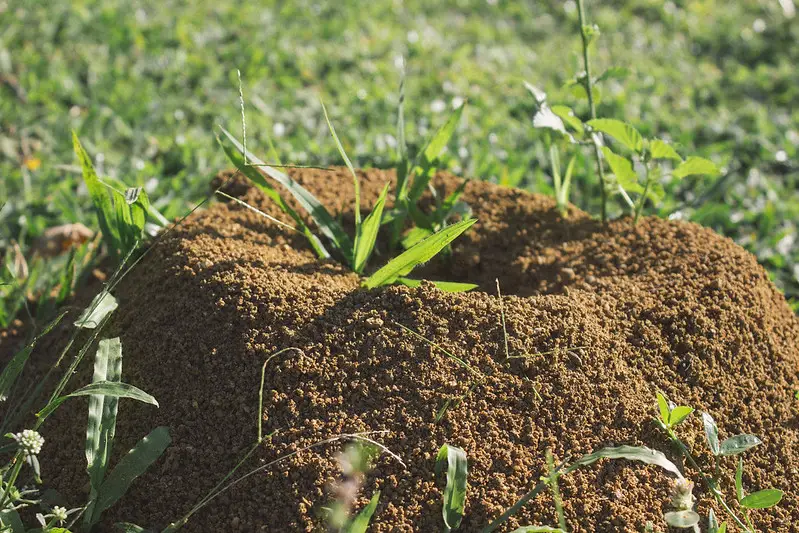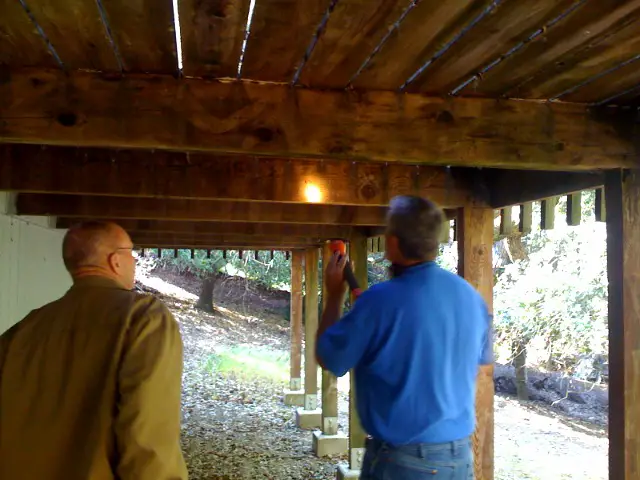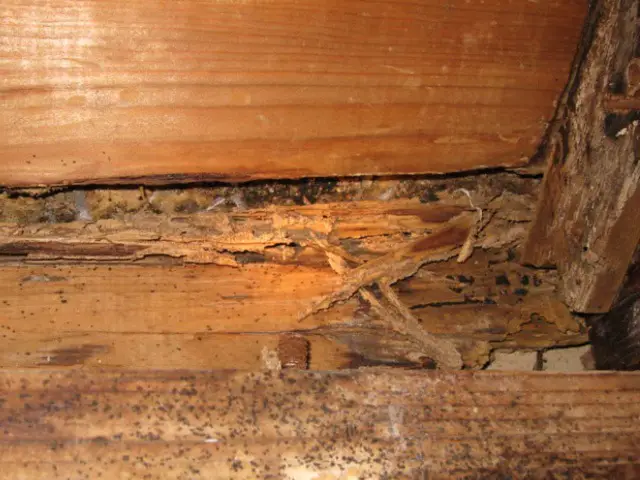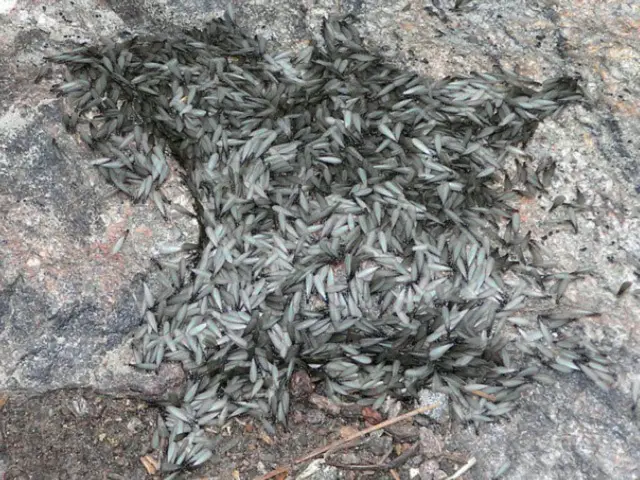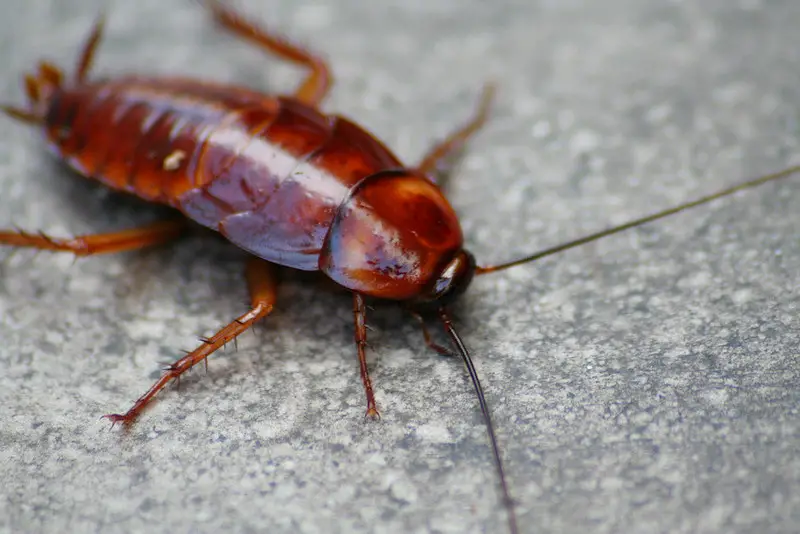When you think of a beautifully maintained lawn with a lush appearance, the last site you want to see is an unsightly anthill. For most homeowners, anthills serve as a major source of frustration. The presence of anthills may damage landscape plants and grasses, damaging the property’s aesthetics. Ant control often means getting rid of anthills. So, I did some research to show you how to get rid of anthills.
Related posts:
- How To Get Rid Of Ants in Texas?
- How To Get Rid Of Ants in Florida?
- How To Get Rid Of Ants In Pennsylvania?
- How To Get Rid Of Ants in New York?
- How To Get Rid Of Ants in California?
- How To Get Rid Of Ants In Illinois?
- How To Get Rid Of Ants In Ohio?
What are anthills?
Anthills are mounds of dirt. The size of the anthill depends on the ant species. A few of the mound-building ant species are red imported fire ants, Allegheny mound ants, pyramid ants, Texas leafcutter ants, harvester ants, and Argentine ants.
Not all ant species build large ant mounds, and some of them don’t build anthills at all. And some ant species build small ant craters between asphalt slabs or concrete gaps. Mounds are one of the most telling indicators of ants present. So you can find anthills just about anywhere there are ants.
Anthills are made of dirt. The dirt that is used for building anthills can be soft or hard. In addition to dirt, anthills can include wood, sand, rock, plant material, and even trash. Although an anthill is proof there is an activity in an area, ants reside under the mound, not on the top of the hill. Most members of the colony are keeping busy below the surface level of the anthill. The queen resides in the deepest level of the nest.
What you see above ground level is a small portion of the nest. Anthills are built by worker ants. The mound is formed by removing dirt from below ground level. Essentially, the ants excavate the soil underground as they build their elaborate networks underground.
What is the purpose of anthills?
The anthill serves three major purposes. Most importantly, the mound serves as the entrance to the nest below ground. In addition, the mound helps to control the internal temperature of the nest. And it also protects the nest from intruders.
Why is my yard full of anthills?
The ants in your yard are after three things, shelter, food and water. If the ants find easy access to what they need, you might find your yard full of anthills one day. Having anthills in your yard means that the ants decided to build nests also known as anthills in your yard. The result is one or more unsightly mounds spread out on your lawn. No matter how much time you spend on building and maintaining your garden, once you see an anthill you know that it’s time to get rid of it.
Although the mounds are nothing more than granulated dirt carried up to the surface by ants, anthills are signaling more trouble down the road. These dirt mounds are clear evidence you have an ant problem. Left unchecked, anthills pose a threat to your home’s curb appeal. But ants can damage the structure of your home, enter your kitchen and contaminate your food. The good news is that there are ways to get rid of anthills.
Anthill fact: The largest ant colony in the world spans 6,000 kilometers.
Are anthills in the yard bad?
If they have easy access to food and water, ants will form anthills in your yard. This is especially true for unkept yards. Expect anthills in your yard if you fail to clean up and declutter regularly.
Destroying anthills
An anthill can infest your yard, kitchen, bathroom, bedroom, or car if left in place. The fastest way to destroy an anthill is to pour boiling water over it. Water is nontoxic, and it won’t have a long-term harmful effect on your yard. Warm water won’t work, so make sure you are using boiling water to destroy anthills. The boiling water will kill all ants it comes in contact with. For greater effect, you can add natural soap to the boiling water. It will enhance the efficiency of this pest control solution because it will trap the water over the ant’s body, causing it to drown.
How to get rid of anthills on the lawn?
Spot control is the best pest control method for killing ants on the lawn. However, before resorting to chemical treatments, consider the severity of the anthill.
If your house has poorly drained areas such as birdbaths or puddles ants will take notice. Leaking pipes also attract ants to the lawn. As ants leave a scent behind they are signaling for more ants to follow in search of water.
How to get rid of anthills without killing grass?
You can get rid of anthills without killing grass. There are many ways to eliminate anthills without killing grass. The anthill control method you choose depends on whether you want to naturally get rid of the anthills or use a chemical pesticide.
Get rid of anthills with soapy water
You can use any soap for this ant control method. Soapy water works for two reasons:
- Enough water will drown the ants inside the anthill. If you use boiling water, it will destroy the structure of the anthill.
- The stickiness of soap makes it hard for ants to get out of the anthill.
Eliminate anthills with carbonated water
I know this sounds too easy, but you can get rid of anthills with carbonated water. It’s an effective ant control method for eliminating ants at the deeper levels of anthills. Because carbon dioxide displaces all the oxygen in the area where water is poured, it causes the ants to suffocate at the deeper networks of the anthill.
Get rid of anthills with a rake
Using a rake, you can flatten out the anthill. It’s a simple solution to get rid of anthills fast. By flattening out the anthill you essentially eliminate the entrance to the colony. When you flatten out the anthill, it will send a message to the ants that this is an unsafe area. As a result, the ant colony might relocate. If the ants don’t get the message after the first time you flatten the anthill, you might need to repeat the process a few times.
Get rid of anthills with boiling water
Boiling water is perhaps the simplest and most effective way to get rid of anthills without killing grass. This is a simple yet effective ant control solution. All you need to do is to locate the anthill, boil about a quart of water, and pour it over the top.
The boiling water will quickly flow through the entire network of tunnels, flooding the colony. The combination of heat and water is enough to get rid of all of the ants the come in contact with it. The heat will also destroy the tunnels.
Although boiling water is effective, it’s not a full-proof ant control solution. If enough ants have time to escape the boiling hot nest, they might try to rebuild their colony.
Get rid of anthills with boric acid
One of the most widely used methods to get rid of anthills is boric acid. Boric acid baits are among the most popular do-it-yourself anthill management techniques. You can try to get rid of anthills with boric acid, but don’t be surprised if doesn’t work.
For boric acid bait to work, you must have the right recipe. If you want to experiment with boric acid bait to get rid of ants in the yard or indoors, you should mix one cup of sugar (200 grams) and three tablespoons of boric acid (25 grams) with 3 cups of warm water (24 fluid ounces).
Start by adding the warm water slowly to the sugar and boric acid. Once mixed you can store it in a jar. When you are ready to get rid of the anthill, soak a cotton ball in the solution. Place the boric acid soaked cotton ball at the top of the anthill. You can make two or three of these soaked cotton balls. If you want the ants to find it faster, drip a little bit of solution around the soaked cotton ball. Give it a couple of days and the anthill should be eliminated.
Identify ants by their anthills
With a bit of research, you can identify the ants by looking at the anthill they build. The geography and type of anthill can often help with identification too.
- Citronella Ants prefer to build anthills in lawns and open fields. You could find anthills all over your yard, especially near your home’s foundation or porch.
- Carpenter Ants primarily nest in water-damaged wood or damp areas. You could find anthills in window sills, woodpiles, and deck footings. Don’t expect carpenter ants to build large anthills. Carpenter ants make small piles of sawdust where they’ve burrowed into the wood and tunneled it out to build their nest and build a colony.
- Pavement Ants build their anthill near sidewalks and driveways. These ants usually create anthills in the cracks of pavement or along curbs.
- Pharaoh Ants will nest in open areas like spaces behind crumbling bricks or concrete or between cabinets. Pharaoh ants do not build anthills.
- Odorous House Ants build their anthills under mulch, stones, and other debris. These ants prefer to make anthills close to food sources.
- Acrobat Ants prefer to build their nests in and around wood or rotted structures. An anthill around your deck or next to an old stump could be the anthill of dealing with an acrobat colony.
